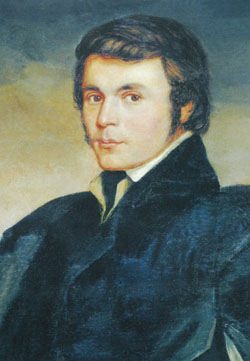Yerevan dialect
Yerevan dialect is a modern Armenian dialect, primarily spoken in the Yerevan, the capital city of Armenia. It belongs to the group of Eastern Armenian dialects and has been significantly influenced by historical, social, and cultural developments in the region. Over the years, the Yerevan dialect has evolved into the de facto standard form of Armenian used in the media, education, and official communications within Armenia.
Characteristics[edit | edit source]
The Yerevan dialect is characterized by several distinctive phonetic, lexical, and grammatical features that set it apart from other Armenian dialects. Phonetically, it exhibits a tendency towards the simplification of consonant clusters and the use of specific intonation patterns that differ from those found in classical Eastern Armenian. Lexically, it incorporates a significant number of loanwords from Russian, Persian, and Turkish, reflecting the diverse historical influences on the region. Grammatically, it tends to favor simpler constructions and has a more flexible approach to word order than the classical language.
History[edit | edit source]
The Yerevan dialect began to take shape in the 19th century, as the city of Yerevan grew in importance under Russian rule following the Russo-Persian Wars. The influx of Armenian speakers from different regions, along with the influences of Russian administration and culture, contributed to the development of a distinct urban dialect. In the 20th century, the establishment of Yerevan as the capital of the Armenian SSR and later the Republic of Armenia, along with the rapid urbanization and modernization of the city, further cemented the status of the Yerevan dialect as a lingua franca among Armenians.
Influence[edit | edit source]
The dominance of the Yerevan dialect in Armenia's public life has had a significant impact on the Armenian language as a whole. It has contributed to the standardization of Armenian, with the dialect's vocabulary and pronunciation serving as a basis for the contemporary Armenian used in education, media, and literature. However, this dominance has also raised concerns about the preservation of regional dialects and the diversity of the Armenian linguistic heritage.
Contemporary Usage[edit | edit source]
Today, the Yerevan dialect is the most widely spoken and understood form of Armenian in the country. It is taught in schools, used in national broadcasts, and serves as the primary means of communication in government and business. While it continues to evolve, absorbing new influences and adapting to the changing linguistic landscape, the Yerevan dialect remains a central element of Armenian identity and culture.
This article is a linguistics stub. You can help WikiMD by expanding it!
Transform your life with W8MD's budget GLP1 injections from $125
W8MD offers a medical weight loss program NYC and a clinic to lose weight in Philadelphia. Our W8MD's physician supervised medical weight loss centers in NYC provides expert medical guidance, and offers telemedicine options for convenience.
Why choose W8MD?
- Comprehensive care with FDA-approved weight loss medications including:
- loss injections in NYC both generic and brand names:
- weight loss medications including Phentermine, Qsymia, Diethylpropion etc.
- Accept most insurances for visits or discounted self pay cost.
- Generic weight loss injections starting from just $125.00 for the starting dose
- In person weight loss NYC and telemedicine medical weight loss options in New York city available
- Budget GLP1 weight loss injections in NYC starting from $125.00 biweekly with insurance!
Book Your Appointment
Start your NYC weight loss journey today at our NYC medical weight loss, and Philadelphia medical weight loss Call (718)946-5500 for NY and 215 676 2334 for PA
Search WikiMD
Ad.Tired of being Overweight? Try W8MD's NYC physician weight loss.
Semaglutide (Ozempic / Wegovy and Tirzepatide (Mounjaro / Zepbound) available. Call 718 946 5500.
Advertise on WikiMD
|
WikiMD's Wellness Encyclopedia |
| Let Food Be Thy Medicine Medicine Thy Food - Hippocrates |
Translate this page: - East Asian
中文,
日本,
한국어,
South Asian
हिन्दी,
தமிழ்,
తెలుగు,
Urdu,
ಕನ್ನಡ,
Southeast Asian
Indonesian,
Vietnamese,
Thai,
မြန်မာဘာသာ,
বাংলা
European
español,
Deutsch,
français,
Greek,
português do Brasil,
polski,
română,
русский,
Nederlands,
norsk,
svenska,
suomi,
Italian
Middle Eastern & African
عربى,
Turkish,
Persian,
Hebrew,
Afrikaans,
isiZulu,
Kiswahili,
Other
Bulgarian,
Hungarian,
Czech,
Swedish,
മലയാളം,
मराठी,
ਪੰਜਾਬੀ,
ગુજરાતી,
Portuguese,
Ukrainian
Medical Disclaimer: WikiMD is not a substitute for professional medical advice. The information on WikiMD is provided as an information resource only, may be incorrect, outdated or misleading, and is not to be used or relied on for any diagnostic or treatment purposes. Please consult your health care provider before making any healthcare decisions or for guidance about a specific medical condition. WikiMD expressly disclaims responsibility, and shall have no liability, for any damages, loss, injury, or liability whatsoever suffered as a result of your reliance on the information contained in this site. By visiting this site you agree to the foregoing terms and conditions, which may from time to time be changed or supplemented by WikiMD. If you do not agree to the foregoing terms and conditions, you should not enter or use this site. See full disclaimer.
Credits:Most images are courtesy of Wikimedia commons, and templates, categories Wikipedia, licensed under CC BY SA or similar.
Contributors: Prab R. Tumpati, MD





